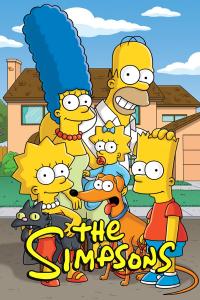| L1Z4RD | ||
|---|---|---|

|  Step 1 Go download my Dreamcast Pack Step 2 seed for eternity ;) Step 3 Go download Demul that is not included in the pack Step 4 Find the Dreamcast BIOs folder in my Dreamcast pack Step 5 Highlight all the files in the folder except the 2 Utopia files. Step 6 zip the highlighted files in a zip called Dc.zip Step 7 Unzip all the contents from the Demul zip you downloaded [after scanning it first to prevent pc aids] to where ever you want it to be launched from. Step 8 Make a new folder in the emulators main extracted folder and name that new folder ROMs Step 9 move Dc.zip into the ROMs folder Step 10 Launch demul by clicking the application in the folder You should be met with the below screen. This is the first time setup. The only thing you need to change in this is the blue circled area shown in the image you want the GD-ROM plugin to say gdrImage. Click OK and Demul should run.  Go to Config>GD-ROM Press Select and find the rom you'd like to play then press OK. Next go to File>Run Dreamcast This is how you choose and play the games.  Now you can go and setup everything else. Go to Config>Video In here you can set resolution and 16:9 instead of full screen 4:3 Depending on your gpu you may want to toggle Vsync.  Below is a list and definition of what settings are in Video: Windows resolution – Resolution is the number of pixels in each dimension that can be displayed. The more pixels you have, the sharper and better defined the image will be. The Dreamcast had a resolution of 640×480, but of course modern PCs can go well above this. The higher you set this setting, the better things will look, but higher settings put more demand on your computers processor. If you choose a widescreen resolution (such as 1080p – 1920×1080), be sure to read the section on aspect ratio and image stretching too. Note – If the emulator seems to ignore this setting, you will need to change your Windows desktop resolution instead. Demul should then copy whatever resolution you have Windows set to. Aspect Ratio – See “Aspect Ratio and Image Stretching” later in the article. Vsync – Vsync is short for vertical synchronization. It’s a technique that helps prevent graphics tearing or stuttering by synchronizing the output frames to the refresh rate of your monitor. Generally this is a good thing, but it has one significant drawback. If your PC can’t draw frames quite quickly enough, the frame rate of the emulator will drop significantly. In that case, you might decide it’s better to put up with the occasional torn frame than suffer the sudden, jarring reduction in game performance as the emulators speed is typically halved. Users with fast PCs can usually leave this setting enabled, those with more modest machines may need to experiment and see what works best. Use Fullscreen – Usually you will want to play your Dreamcast games in full screen, without the distractions of the desktop around the window. While setting up the emulator you might want to leave this setting off, until you have everything perfect, but normally most users would want to enable this option. Internal resolution – Explaining this one is a little tricky. Basically, internal resolution is the resolution the game is rendered at, this is different to the the full screen (Windows resolution) resolution which is the resolution the game is scaled to on the monitor. All you need to understand is that increasing this setting can significantly increase the visual quality of the games, but it also significantly increases the load on your computers CPU too. Typically this setting has diminishing returns, 2x is a lot nicer than 1x, but 3x and 4x don’t give such dramatic improvements. Again a little experimentation might be required to find the most optimal setting. Users with fast PCs should start with 2x, while those of you with more modest machines should definitely start at 1x. On our test machine we couldn’t go higher than 2x with the DirectX 11 plugin without the emulator crashing on startup. Max layers – Available on the Direct3D 11 configuration window only. We’re not actually certain what this setting does, but we know it affects emulation accuracy. On most computers, setting it to 8 will produce good enough results. Setting it to 16 or 32 requires a powerful graphics card. Our test machine runs an Nvidia GTX 770 graphics card and has this setting at 32. Shader effects – These are optional effects that change the appearance of the image. Some, like “CARTOON” are just for fun, while others like “FXAA” (fast approximate anti-aliasing) can improve the image quality. With 2D games, the Scanlines filter can give the games a nice retro look. Again, using shader effects puts more strain on the computer. Users with faster PCs might want to try FXAA for a slight improvement in image quality. Hacks – These options improve the speed of the emulation at the cost of accuracy. The most important one is “Disable Auto Sort”. Users on more modest hardware should select this option to improve performance in games. This does reduce the accuracy of the emulation however, and you may find that lighting or other effects aren’t drawn as accurately when this setting is enabled. Rotate – Rotates the screen display. Not really needed in Dreamcast games, this is included since Demul also emulates Naomi, Sega’s highly successful arcade and coin-op hardware platform that runs on similar hardware to the Dreamcast. Other Notes: Netplay: This allows you to emulate LAN connections to use Dreamcast's online play. Requires knowledge in openvpn screens from games included in the pack    | |
Like 1 | ||
| Post liked by - GOOGLE | ||








































